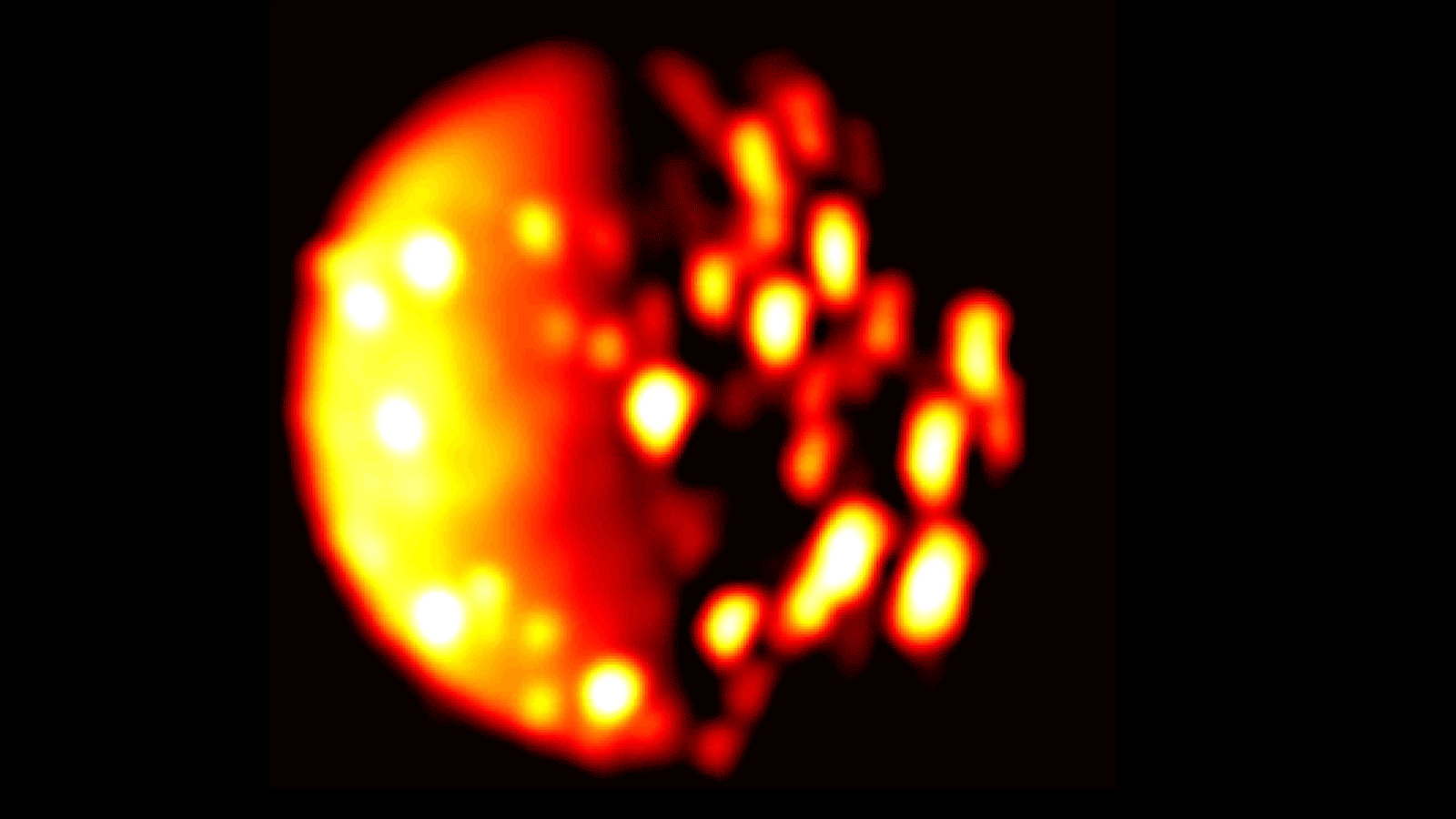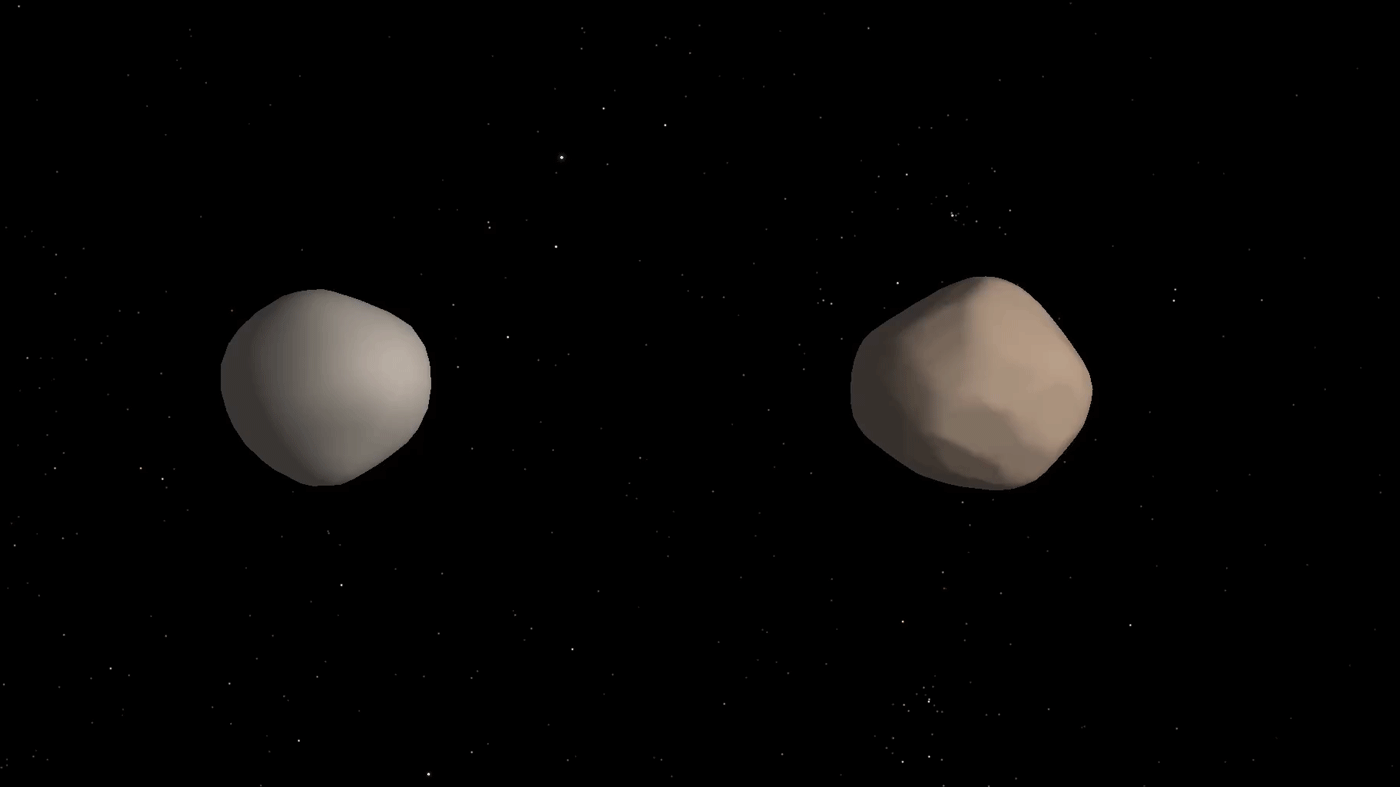Data collected by NASA’s Juno spacecraft using its Jovian InfraRed Auroral Mapper (JIRAM) instrument point to a new heat source close to the south pole of Io that could indicate a previously undiscovered volcano on the small moon of Jupiter. The infrared data were collected on Dec. 16, 2017, when Juno was about 290,000 miles (470,000 kilometers) away from the moon.
Why your brain never runs out of problems to find
New insights into what might have smashed Uranus over onto its side
The gas/ice giant Uranus has long been a source of mystery to astronomers. In addition to presenting some thermal anomalies and a magnetic field that is off-center, the planet is also unique in that it is the only one in the Solar System to rotate on its side. With an axial tilt of 98°, the planet experiences radical seasons and a day-night cycle at the poles where a single day and night last 42 years each.
Instead of building single monster scopes like james webb, what about swarms of space telescopes working together?
In the coming decade, a number of next-generation instruments will take to space and begin observing the Universe. These will include the James Webb Space Telescope (JWST), which is likely to be followed by concepts like the Large Ultraviolet/Optical/Infrared Surveyor (LUVOIR), the Origins Space Telescope (OST), the Habitable Exoplanet Imager (HabEx) and the Lynx X-ray Surveyor.
Juno data shows that some of jupiter’s moons are leaving “footprints” in its aurora
Since it arrived in orbit around Jupiter in July of 2016, the Junomission has been sending back vital information about the gas giant’s atmosphere, magnetic field and weather patterns. With every passing orbit – known as perijoves, which take place every 53 days – the probe has revealed things about Jupiter that scientists will rely on to learn more about its formation and evolution.
Method of making oxygen from water in zero gravity raises hope for long-distance space travel!
Observatories Team Up to Reveal Rare Double Asteroid
NASA’s Fermi Traces Source of Cosmic Neutrino to Monster Black Hole
For the first time ever, scientists using NASA’s Fermi Gamma-ray Space Telescope have found the source of a high-energy neutrino from outside our galaxy. This neutrino traveled 3.7 billion years at almost the speed of light before being detected on Earth. This is farther than any other neutrino whose origin scientists can identify.
'X'-ploring the Eagle Nebula and 'Pillars of Creation'
Curious Kids: Where do black holes lead to?
7.5 billion and counting: How many humans can the Earth support?
What getting too little vitamin D does over time
2019 Total Solar Eclipse Event at ESO’s La Silla Observatory in Chile
On 2 July 2019 one of nature’s most impressive phenomena will be visible from ESO’s La Silla Observatory in Chile — a total solar eclipse. As these are very rare — the next one visible from La Silla will occur in 212 years — ESO is organizing a campaign of observing and outreach activities on site, allowing the general public to experience this spectacular event. Tickets to participate will be available from 13:00 CEST/07:00 CLT on Friday 13 July 2018.
Whale sharks gather at a few specific locations around the world – now we know why
The whale shark is the largest fish in the world, but much of its life cycle remains shrouded in mystery. These gentle giants gather in just a handful of places around the globe – something which has long baffled scientists – but our new research has started to explain why. Better understanding of whale shark movements could help prevent further population loss in a species that has already experienced a 63% population decline over the past 75 years.
Burst of Celestial Fireworks
Like a July 4 fireworks display, a young, glittering collection of stars resembles an aerial burst. The cluster is surrounded by clouds of interstellar gas and dust - the raw material for new star formation. The nebula, located 20,000 light-years away in the constellation Carina, contains a central cluster of huge, hot stars, called NGC 3603.
Amazing: First Confirmed Image of Newborn Planet Caught with ESO’s VLT
SPHERE, a planet-hunting instrument on ESO’s Very Large Telescope, has captured the first confirmed image of a planet caught in the act of forming in the dusty disc surrounding a young star. The young planet is carving a path through the primordial disc of gas and dust around the very young star PDS 70. The data suggest that the planet’s atmosphere is cloudy.
Curious Kids: How was the ocean formed? Where did all the water come from?
On Earth there is more ocean than land. Of course, there is also a lot of water locked up as ice at the North and South Poles. Where all that water came from is a very good question. Scientists have been wondering about it for a long time. We are still not exactly sure but it is probably a combination of two places.
Oumuamua accelerated out of the solar system like a comet
On October 19th, 2017, the Panoramic Survey Telescope and Rapid Response System-1 (Pan-STARRS-1) telescope in Hawaii announced the first-ever detection of an interstellar asteroid – I/2017 U1 (aka. ‘Oumuamua). Originally though to be a comet, follow-up observations conducted by the European Southern Observatory (ESO) and others confirmed that ‘Oumuamua was actually a rocky body that had originated outside of our Solar System.
Math explains why your bus route seems so unreliable
Complex organic molecules are bubbling up from inside Enceladus
The Cassini orbiter revealed many fascinating things about the Saturn system before its mission ended in September of 2017. In addition to revealing much about Saturn’s rings and the surface and atmosphere of Titan (Saturn’s largest moon), it was also responsible for the discovery of water plumes coming from Enceladus‘ southern polar region. The discovery of these plumes triggered a widespread debate about the possible existence of life in the moon’s interior.


















